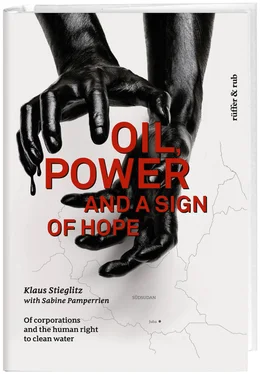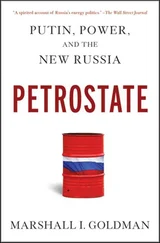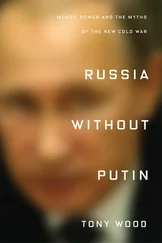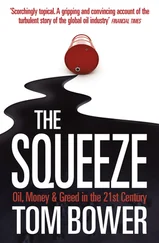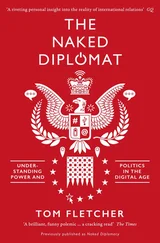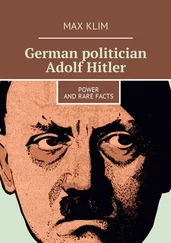The fact is that Mercedes’ decision to withdraw from automobile racing was caused by business reasons. This decision was actually made prior to the commencement of the 1955 racing season. Racing consumed the funds needed to develop standard vehicles.21
Mercedes had provided all of the funds needed to finance its race team. There were no sponsors in those days. They arrived on the scene in 1968, in which the ban on placing advertisements on race cars was abolished.22
*
One month after the accident at Le Mans, an uprising breaks out in Southern Sudan’s garrison city of Torit. Forming part of the UK’s Sudan Defence Force, which is charged with maintaining Britain’s colonial dominance of the country, the Equatorial Corps is stationed in this small city, which is located near the Sudan’s border with Uganda. The Corps includes soldiers from Southern Sudan. On August 18, 1955, they rise in mutiny. They refuse to let themselves be replaced by soldiers from northern Sudan. The uprising is fueled by fears of the oppression expected to be experienced by Southern Sudan upon the granting of independence on January 1, 1956 to the regions of Southern Sudan and Northern Sudan by the British-Egyptian Condominium controlling the areas.
Since the creation of the British-Egyptian Condominium and its extension to comprise the Sudan, northern Sudan was run by a British-Egyptian administration. Southern Sudan was managed as a British colony.23 In 1922, the Egyptians were compelled to withdraw from Sudan. This caused the British to introduce a form of indirect rule in northern Sudan.24 British administrators supervised the operations of native and locally-based responsible parties.25 This move was caused by the Britons’ wish to cut costs of administration.26 The British attributed the move, however, to their wish for “modernization”.27 The British regarded Southern Sudan as not being ready for such a “modernization”. They thus set up a dedicated administration in the region.28 By doing such, they pursue a policy designed to isolate Southern Sudan.29 It resulted in the cementing of the partition of Sudan into two cultural, ethnic and linguistic regions.30
The cultivation of and trading in cotton gave northern Sudan a modicum of prosperity. Under the guidance of the British, the region and its education and health care systems were developed, as was its infrastructure. The region’s population, which is predominantly Arab, was inculcated in the precepts of participation in politics and its ramification upon public life. This caused nationalism to arise in northern Sudan in the post-World War I era.31 As was the case in those Arab regions that allied themselves during World War I with the UK, France and the USA as a way of putting an end to the 500-year domination of the Ottoman Empire, northern Sudan experienced a mushrooming of Muslim sects. Akin to the Arab regions, nationalism’s goal in Sudan was also the achieving of independence. Northern Sudan’s nationalists’ vision for the future state: it was to retain its Islamic nature.32 In World War II, the Sudan Defence Force prevented Italy’s Fascist armies from conquering the region. It was only after the war that negotiations on independence were launched.33 A conference was staged in 1947 in Juba, a city in Southern Sudan. At it, the British and North Sudanese negotiators presented the Southern Sudanese with a fait accompli. They had resolved that northern and Southern Sudan were to be joined into one country.34
Southern Sudan was underdeveloped and backward, in every definition of the terms. This was due to the colonial administration’s failure to do anything to develop the region’s economy, education system or infrastructure. This was in sharp contrast to the UK’s actions in northern Sudan. The Southern Sudanese were quite aware of this situation. They felt themselves—quite correctly so—to be ostracized and oppressed. Southern Sudan’s rejection of the jerry-built national structure being imposed upon them grew with each day that independence approached.
Major protests broke out in Southern Sudan in 1955. Being protested were northern Sudan’s dominance and the neglect of the interests of the south resulting from it. Southern Sudan’s population began to assert its rights to such. The above-described mutiny in Torit led to the initial, violent expression of the frustration that had built up over the decades. This outbreak of violence caused the death of hundreds of northern Sudanese in Torit.35 The day on which the mutiny in Torit began is now known as “Torit Revolution Day”. It has been celebrated as a national holiday since South Sudan gained its independence in 2011. The rebels of Torit are now regarded as national heroes.36 The outbreak of violence in 1955 has become the stuff of legend-building.
The Southern Sudanese were not very well organized. This lack enabled the northern Sudanese to rapidly quell the rebellion. They imposed death sentences upon 250 Southern Sudanese, most of them Christians and intellectuals.37 The North’s massive repression caused Southern Sudanese to flee in large numbers to neighboring countries. These refugees soon founded resistance groups. They began waging war with their opponents from the North. This civil war began prior to Sudan’s gaining of independence. It ended only in 1972, the year in which Southern Sudan was granted partial administrative autonomy. This civil war was to be followed by another. The wave of forced emigration from Southern Sudan was also only the first of many.
*
In 1974, Chevron, the American oil corporation, acquired the rights to prospect for oil in Sudan, and to exploit any findings of such. The company’s prospecting was successful. Test drilling conducted in 1978 in Southern Sudan paid off. The finding of oil gave Sudan, one of the world’s poorest countries, the prospect of being lifted out of poverty. While not as large as those of Saudi Arabia or Iraq, Sudan’s oil reserves are comparable in size with those of such oil producers as Brunei or Colombia.38 Had it been prudently managed, the oil could proved a benefit for the country.39 As will be shown, Sudan’s oil has been anything but that for the country. The oil has enriched a small elite. For the rest of the country, the finding of oil has not improved life. Quite the opposite. It has proven a curse. The oil has given rise to warfare, despoliation, depopulation and environmental destruction.
*
A war is launched in 1983. It is against a part of the country’s own population. It is being waged by the regime in Khartoum. Cloaking its aggression in the dogma of radical Islam, the regime starts asserting its hegemony over the non-Islamic and non-Arab parts of the population. The resulting war of cultures is to be viewed from today’s vantage point as being a forerunner of the today’s phenomenon of Islam being used an instrument of the violence-based, state-organized assertion of control. For many years, the world takes scant notice of the Sudan’s regime brutal oppression, whose underlying and true motive is the gaining and maintaining of dominance over resources—and specifically over the oil.40
The ensuing conflict causes a complete collapse of all order in Sudan, be it state or traditions-imposed. Sudan is a home to a multiplicity of ethnic groups. As such, it has always been subject to tensions among them, with resources repeatedly proving a source of such strife. This strife had, however, been kept under control until the recent past by mechanisms of conflict resolution adhered to by both nomadic Arabs and non-nomadic Africans engaged in trading with each other.41 During the resulting conflict, all parties perpetrate despicable acts of barbaric violence upon the civilian population.
*
At the beginning of the 1980s, Daimler-Benz’s managers start thinking about the company’s returning to automobile racing.42 This idea gains support. Daimler-Benz has a problem — a bad image. Its cars are viewed as not having an adequate level of quality.43 The managers view automobile racing as being a “hot button” for purchasers of cars, who tend to transfer the image arising from race cars—high levels of performance, dynamism, advanced technologies and internationalism—to standard vehicles. Daimler wants and needs to profit from this transferring.44 In 1988, the corporation resolves to return to car racing. Its initial fields of re-entry are touring cars and sport prototypes.45 This re-entry produces mixed results. Daimler’s management is by no means unanimously convinced of the efficacy of the investments made in this area.46 Also planned by the company is a return to Formula 1. But efforts to do such run into a number of bumps.47 The return does have its impact upon standard models: silver is the favorite color of the Mercedes purchased.48
Читать дальше
